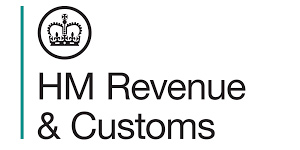HMRC SDLT: Example 3 on Rent with Services Archived, Now at SDLT11015
SDLTM11030 – Chargeable Consideration: Rent: Inclusive of Services
This page discusses the concept of chargeable consideration in the context of rent that includes services. It provides an example to illustrate how these principles are applied. However, the specific example 3 has been moved to another page, SDLT11015, and this page has been archived.
- Chargeable consideration refers to the total amount paid for rent, including any services.
- Example 3 has been relocated to SDLT11015.
- This page is now archived and no longer updated.
“`

Read the original guidance here:
HMRC SDLT: Example 3 on Rent with Services Archived, Now at SDLT11015
Understanding SDLT: Chargeable Consideration and Rent
Introduction to SDLT and Chargeable Consideration
Stamp Duty Land Tax (SDLT) is a tax applied when you buy a property or land in the UK. One of the key aspects of SDLT is understanding what is considered chargeable consideration. Chargeable consideration refers to the total amount paid for a property or land, including any rent and other payments.
When calculating SDLT, it is crucial to know what counts as chargeable consideration. This understanding ensures that you pay the correct amount of tax when acquiring property.
What is Chargeable Consideration?
Chargeable consideration can include different types of payments, not just the purchase price. Here are the main components considered:
– Monetary Payments: This includes the purchase price of the property.
– Money’s Worth: Any non-cash consideration, such as assets transferred as part of the deal, is included.
– Rent: If there are rent payments as part of the agreement, these can also contribute to the chargeable consideration.
Example of Chargeable Consideration
Let’s look at an example to illustrate how chargeable consideration is calculated:
Suppose a buyer purchases a shop for £250,000. As part of the agreement, the buyer also agrees to pay an additional annual rent of £10,000 to the previous owner for the right to use the land adjacent to the shop.
In this case, the total chargeable consideration will be:
– Purchase price: £250,000
– Annual rent: £10,000
Total chargeable consideration = £250,000 + £10,000 = £260,000
This total figure will be used to assess the SDLT owed on the property transaction.
Rent as Chargeable Consideration
When considering rent in relation to chargeable consideration, it is important to clarify how rental agreements are structured. The type and terms of the rental arrangement can significantly affect SDLT calculations.
### Key Points about Rent in SDLT
– Inclusive Rent: If the rent includes additional services, it is necessary to determine if the services are part of the chargeable consideration.
– Main Purpose of the Rent: The rent must be primarily for the use of the property, not for ancillary services.
For instance, if a commercial property rental agreement includes provisions for cleaning, maintenance, and utilities as part of the rental price, it might still be deemed chargeable consideration if the primary purpose of the rent is to access the property.
Example: Rent Inclusive of Services
Consider a situation where a company rents an office space. The rental terms state:
– Base rent: £8,000 per year
– Additional costs for services (cleaning, utilities, etc.): £2,000 per year
In this scenario, the total rent amounts to £10,000 a year. Since the rent encompasses both the direct use of the office and additional services, the entire £10,000 could be considered chargeable consideration in the context of SDLT.
Calculation of SDLT on Chargeable Consideration
To calculate the SDLT due on the chargeable consideration, the following steps should be followed:
1. Identify Total Chargeable Consideration: Add all applicable payments, including rent and monetary amounts.
2. Refer to SDLT Rates: Check the current SDLT rates that apply to the total consideration.
3. Calculate SDLT Amount: Apply the appropriate rate to the total consideration.
Here’s a simplified example of how this works in practice:
– Total chargeable consideration: £300,000
– Current SDLT rate (for instance, 5% for the portion over £250,000): £300,000 – £250,000 = £50,000; 5% of £50,000 = £2,500
– Thus, SDLT due = £2,500.
What Happens if Rent is Adjustable or Variable?
If the rent is not fixed and can change based on certain criteria, it is still considered chargeable. However, the total amount that is considered for SDLT should reflect the expected rent over the term of the agreement.
### Managing Variable Rent Arrangements
– Projections: Estimate the average rent over the term of the agreement for SDLT calculations.
– Reassessment: In cases where rent adjustments occur, a reassessment of SDLT may be necessary.
For example, if a rental agreement starts at £10,000 but can increase up to £15,000, you might consider an average or project the total expected rent throughout the lease when calculating SDLT.
Complex Situations Involving Chargeable Consideration
Certain arrangements can complicate SDLT calculations, such as shared ownership or property acquisition involving various stakeholders.
### Key Complex Scenarios
1. Shared Ownership: If multiple buyers purchase a property, each buyer’s share must be correctly accounted for in relation to chargeable consideration.
2. Property Transfers: If a property is given as a gift but is subject to rent payments, the rent will still count during SDLT assessments.
3. Part-exchange Transactions: When part-exchanging a property, the consideration received (valuation of the property given) serves as a component of chargeable consideration.
Consequences of Misreporting Chargeable Consideration
It is important to report chargeable consideration accurately. Misreporting can lead to penalties, interest on unpaid SDLT, and legal issues. Here are some potential consequences:
– Penalties: If the SDLT due is improperly calculated, HMRC may impose penalties.
– Interests: Any outstanding taxes may accrue interest until paid in full.
– Legal Actions: In extreme cases, HMRC can pursue legal actions for unpaid taxes.
Getting Help and Further Information
If you encounter difficulties understanding SDLT calculations or determining chargeable consideration, it is advisable to seek guidance. You can consult professionals such as solicitors or tax advisors who specialise in property transactions.
For detailed information regarding specific SDLT cases, refer to official HMRC guidelines or specific articles on SDLT. Some resources can be particularly helpful, for example, regarding how SDLT applies to rental arrangements:
– For more details and examples of chargeable consideration in relation to rent, visit SDLTM11030 – Chargeable Consideration: Rent: Inclusive of Services.
Understanding SDLT and chargeable consideration ensures compliance with tax obligations when dealing with property transactions. By knowing what counts towards chargeable consideration and how to calculate SDLT properly, property buyers can manage their financial responsibilities effectively.







